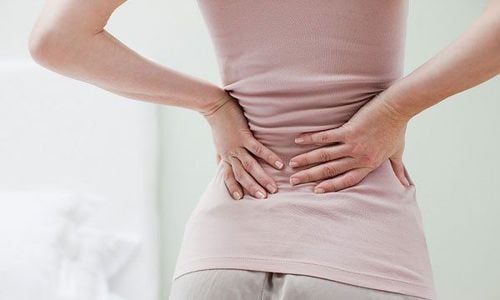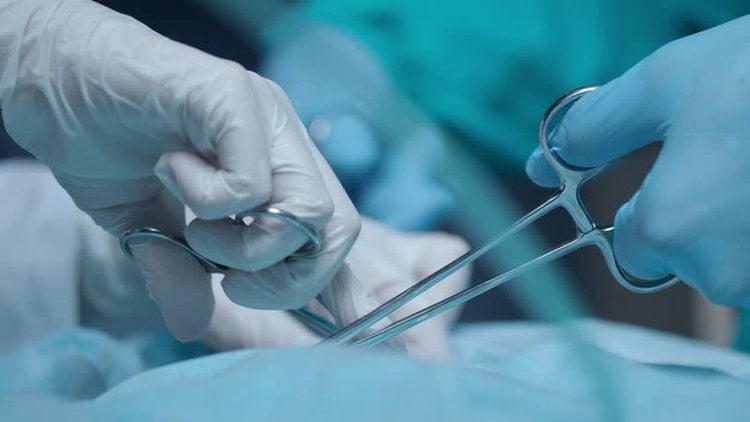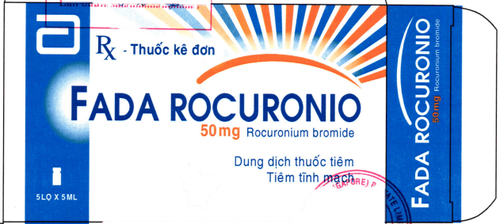This is an automatically translated article.
Herniation of the nucleus pulposus can cause muscle weakness and complete paralysis in the distribution of the affected nerve roots. Diagnosis of hernia is usually by MRI or CT. Mild cases can be treated with medication, while severe cases require surgery depending on the condition of the disease.
1. What is herniated nucleus pulposus?
Herniated nucleus pulposus is the protrusion of the nucleus pulposus through a tear in the fibrous tissue around the disc causing pain. When the intervertebral disc nucleus presses on adjacent nerve roots, it will cause nerve root manifestations according to spinal cord secretion with manifestations of weakness and muscle paralysis in the distribution area of the affected nerve roots.
The cartilaginous disc that separates the vertebrae consists of a fibrous ring in the outer shell that surrounds the soft substance known as the nucleus pulposus. When degenerative changes with or without trauma lead to lumbosacral or cervical herniation or nuclei through the capsule, the nucleus pulposus is displaced medial or posterior to the epidural space. A herniated nucleus pulposus occurs when the nucleus pulposus slips out of place and compresses or irritates nerve roots. Posterior herniation of the nucleus pulposus can compress the ponytail or medulla, especially in cases of congenital spinal stenosis. More than 80% of lumbar disc tears affect the L5 or S1 roots, with the cervical region most commonly affected, C6 and C7.
2. Symptoms of herniated spinal cord disease
Herniation of the nucleus pulposus usually does not present any characteristic symptoms. However, in some cases, actual symptoms or functional distribution of the nerve roots may be affected. The pain usually develops suddenly, but subsides with rest. In contrast, in herniated nuclei, the nerve root pain caused by an epidural tumor or abscess is more insidious in onset, with pain increasing at rest.
Patients with herniated nucleus pulposus at the lumbar region, in the upright position of the leg, strain the lower lumbar nerve root and cause pain in the lower back or legs, if it is a central hernia, the pain occurs in the lower back. both sides. Straightening the knee while sitting also causes pain.
Herniation of the spinal cord in the cervical spine causes pain when flexing or tilting the neck. Chronic cervical spinal cord compression presents with spastic paralysis of the lower extremities and in acute cases causes quadriplegia. Compression of the cauda equina causes loss of circular muscle function and often leads to urinary retention or incontinence.

Đau thắt lưng là dấu hiệu của thoát vị nhân tủy tại vị trí vùng thắt lưng
3. Diagnosis of herniated nucleus pulposus
Diagnosis of herniated nucleus pulposus is usually by MRI or CT scan. Whereas MRI or CT can pinpoint the cause and pinpoint the exact location of the lesion. Rarely, contrast-enhanced CT is required, which occurs only when there are contraindications to MRI and undiagnosed CT. In addition, diagnostic electrodiagnostic testing can help identify the nerve roots involved.
Because a herniated nucleus pulposus has no typical symptoms, the clinician must carefully consider the correlation between symptoms and abnormalities on MRI and consider this before proceeding with an invasive procedure. encroachment.
4. Treatment of herniated nucleus pulposus
4.1 Conservative treatment
Treatment of herniated nucleus pulposus should be conservative, unless the patient has progressive or severe neurological deficits. Patients are allowed to operate gently and practice the correct movements and techniques, such as exercise, yoga, etc. Avoid vigorous physical activity or carrying heavy objects. Bed rest is contraindicated for too long (including stretching).
Use non-steroidal anti-inflammatory drugs, acetaminophen or other pain relievers as needed. If symptoms are not relieved with non-opioid analgesics, systemic or epidural corticosteroids may be substituted. However, pain relief tends to be modest and temporary. Methylprednisolone can be used, tapered over 6 days, starting with an oral dose of 24mg/day and decreasing to 4mg/day.
In addition, supportive treatments such as physical therapy and home exercises can improve back muscles and posture, thereby reducing spinal movements that irritate or compress the nerve roots. terrible.

Điều trị thoát vị nhân tủy bằng thủ thuật xâm lấn
4.2 Invasive procedures
Patients with herniated spinal cord should consider and consult a doctor when performing invasive surgery if in some of the following cases:
Lumbar radiculopathy leads to persistent or worsening neurological deficit, especially objective symptoms (eg, weakness, hyporeflexia). Patients with symptoms of hypoesthesia or severe, refractory nerve root pain often elect to surgically remove the herniated disc nucleus and remove the posterior arch. Percutaneous approaches to bulging disc removal are still being evaluated. Note, experts do not recommend removing the herniated nucleus pulposus by local injection of the enzyme chymopapain. Postoperative evaluation should be made immediately for acute spinal cord compression injury or cauda equina syndrome (eg, causing urinary retention or incontinence). If cervical radiculopathy leads to signs of spinal cord compression, surgical decompression should be performed immediately; otherwise, surgical resection may be performed when other treatments fail.
In summary, herniation of the nucleus pulposus needs to be examined and treated according to the expert's protocol to improve the function of this organ and minimize complications.
Vinmec International General Hospital converges a team of leading expert doctors who will provide the most accurate diagnosis methods and treatment regimens for each patient. The technical system, advanced technology and modern, 5-star facilities will help patients feel comfortable and secure in their treatment.
Please dial HOTLINE for more information or register for an appointment HERE. Download MyVinmec app to make appointments faster and to manage your bookings easily.













